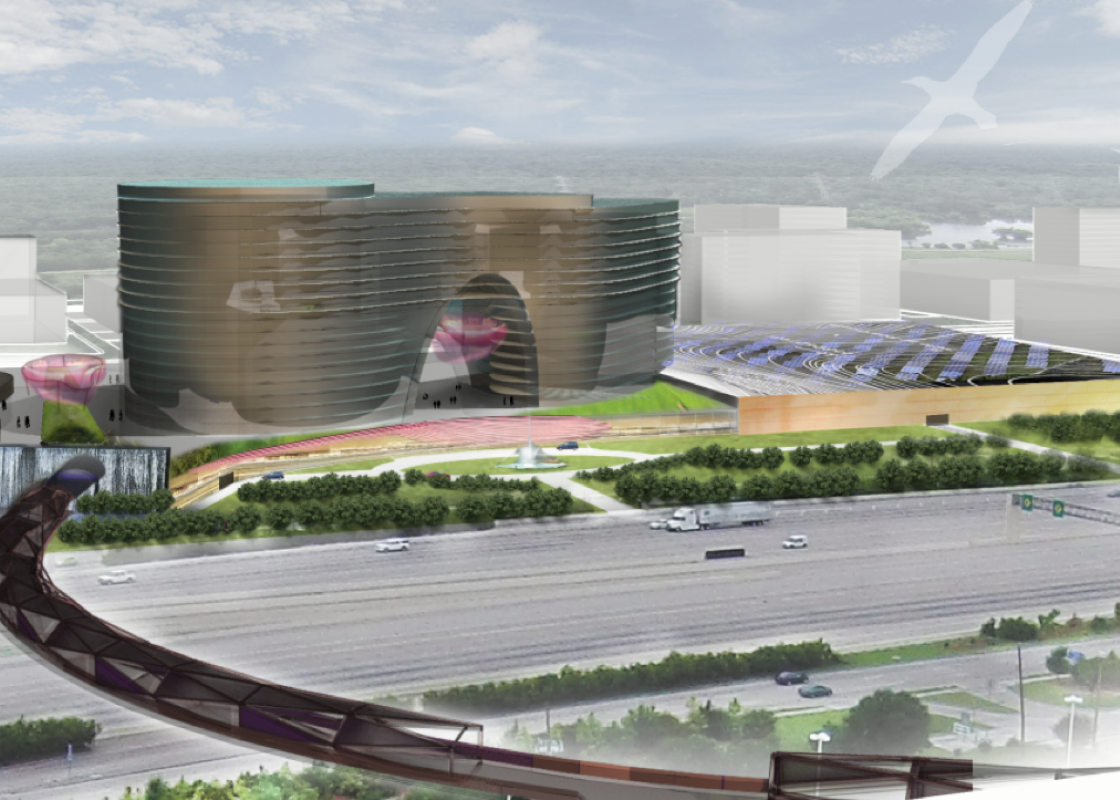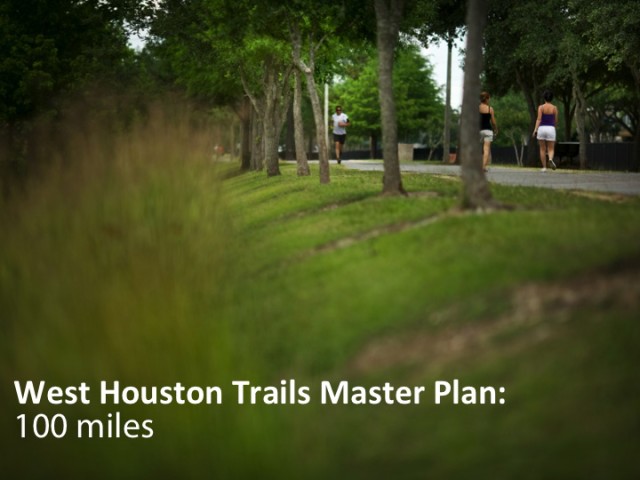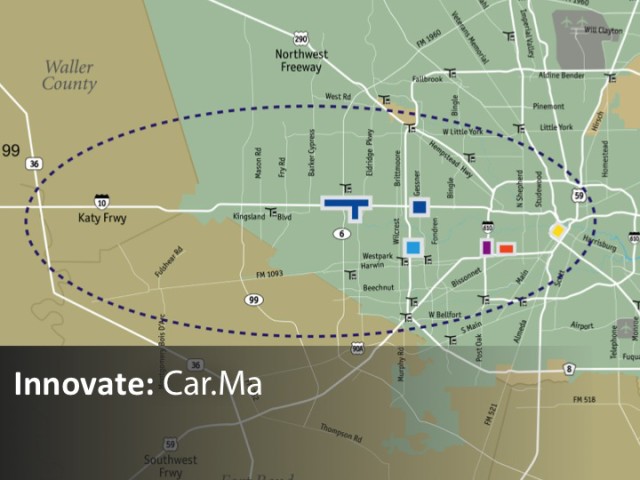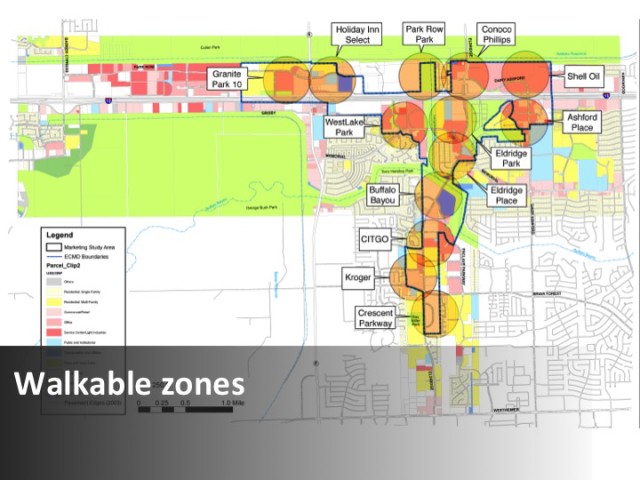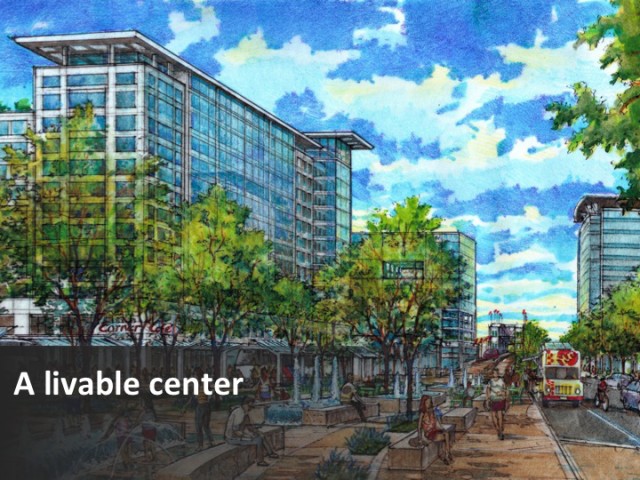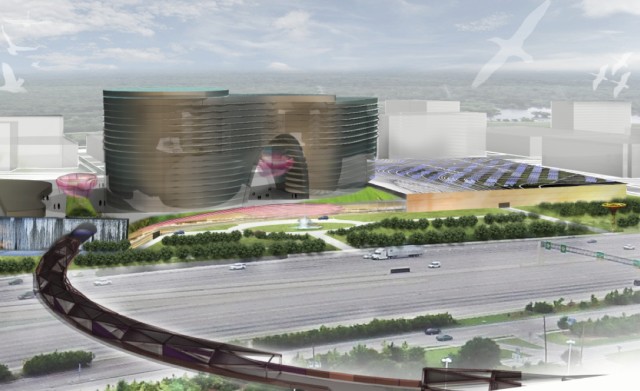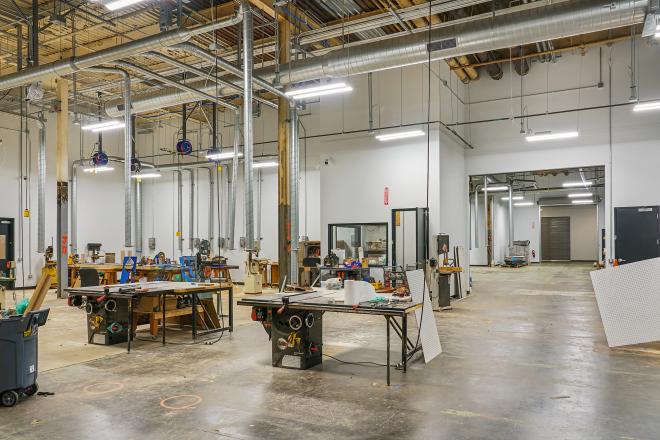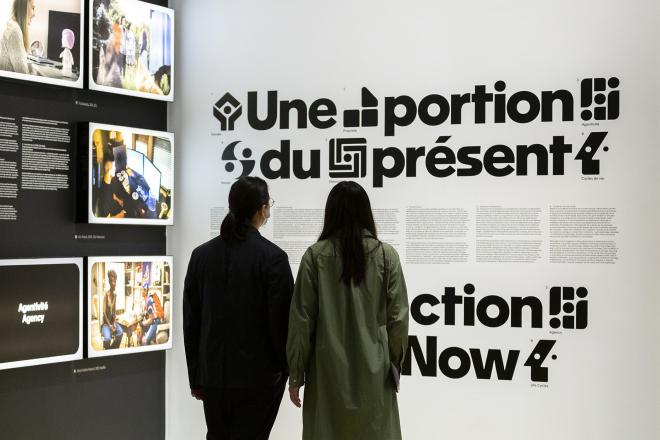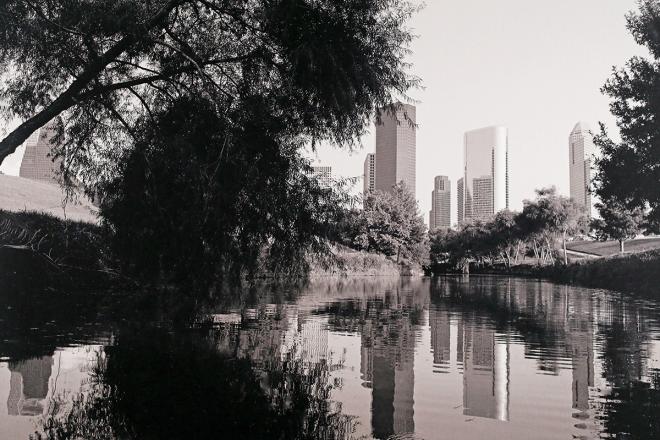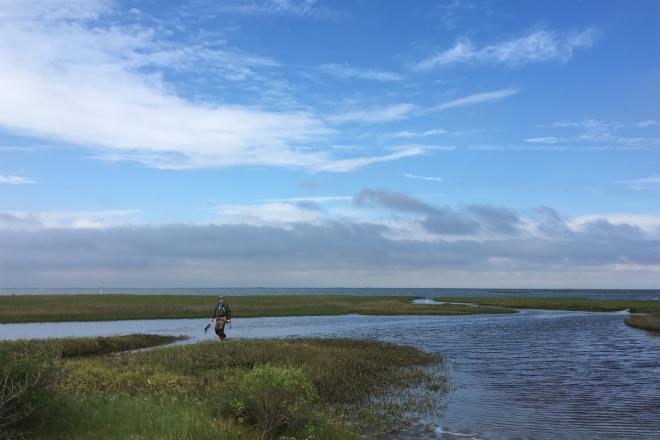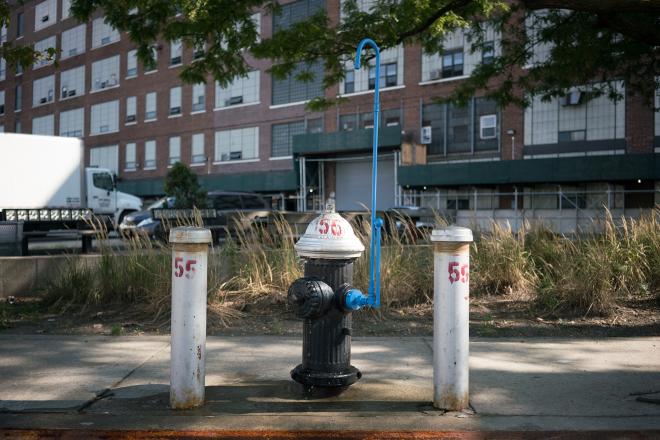The Energy Corridor District is not an obvious candidate for becoming walkable. Office towers oriented to parking garages, single-family homes on cul-de-sacs, and the Katy Freeway define much of the landscape. Yet, at the Rice Design Alliance's recent Walk Houston civic forum, Clark Martinson, General Manager of the Energy Corridor District, presented an ambitious vision for a walkable Energy Corridor. Ideas ranged from adding sidewalks, expanding the trail network through the Addicks and Barker reservoirs, and building an air-conditioned bridge across the freeway to a transit oriented development with multi-modal transportation functions at the METRO Park and Ride location. A video of the talk and an excerpt are presented below.
There is amazing growth happening on the west side of Houston right now. It is greater growth in office development than we have seen in 30 years; however, the Class A office tenants today and the millennials they are hiring don’t want the old campuses. They don’t want the old buildings. They want something that is not so dependent on the private automobile.
Click here for a video of Martinson's talk.
The new campuses are taking advantage of the views of Terry Hershey Park and of the reservoirs in the area. The new tenants are demanding new park connections for access to 40 miles of trails. Local bus and shuttle stops, and pedestrian amenities, are being incorporated into the campuses with walkways to encourage healthy outdoor activities and walking.
Companies recognize that workers want active transportation solutions. Lunch and learn seminars are held throughout the year encouraging cycling safety and to show how to bicycle to work. Some companies go so far as to offer indoor parking, repair stands, replacement parts, and tools for tuning your bike before you return home. The Energy Corridor District, Harris County, the City of Houston, TxDOT, and others are working together to provide safer infrastructure to encourage bicycling and walking activities.
If you are familiar with that part of West Houston, the two reservoirs, Addicks and Barker reservoirs, are the large detention facilities built in World War II to protect downtown Houston from flooding. Commercial development and residential homes have encroached upon the detention facilities. However that green open space is an asset to get from the homes to the workplace. Today, over 200 acres of land adjacent to Terry Hershey Park and the spillway coming out of the Addicks Reservoir are being developed with 1,200 apartment units and 6 million square feet of office space that will be connected with trails and walkways. Hopefully we will go from the past single focus of a large apartment complex or an exclusive office campus to a mixed-use place that will have the walkable environment that is demanded by tenants, shoppers, and residents.
But that is not the way Houston works, that is the way enclaves within Houston work. The business districts --- Downtown, Greenway Plaza, Uptown, Westchase, Memorial City, Energy Corridor --- are connected by I-10 and the Westpark tollroad. Most of our trips within the region will be by cars. However, we don’t necessarily want to continue those trips by single-occupant cars. We are trying to create a program similar to Lyft and Uber where on your phone you have an app called Carma that can match a trip with your Fulshear neighbor so that you are actually sharing the seats in your car, taking cars off the road yet putting more people on the road.
You are at work, you don’t have a car. Our solution is to provide a car for you at work. It is not your office pool car. But it is an hourly rental car. We have a car share program with Enterprise just like Zipcar is providing inside the Loop.
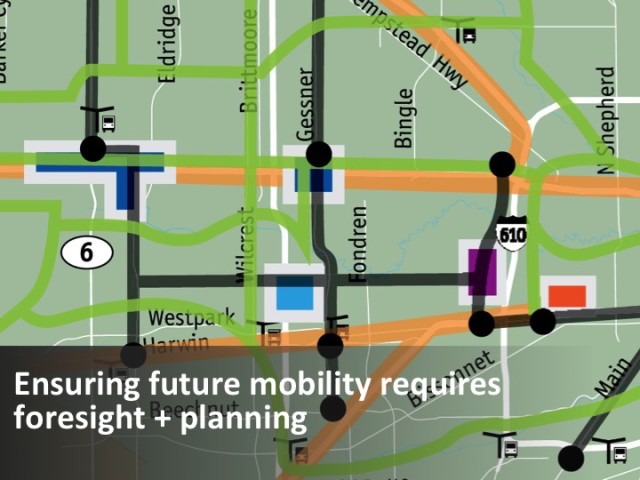 Black shows connected Park and Rides. Green shows trails along bayous, parks, and utility rights of way. Image courtesy Energy Corridor District.
Black shows connected Park and Rides. Green shows trails along bayous, parks, and utility rights of way. Image courtesy Energy Corridor District.To connect with transit in the west part of the city, we need to have two-way Park and Rides on 290, 10, Westpark, and 59. What if we took the light rail and BRT concepts that would connect to the Uptown area and Greenway Plaza, and brought it out Westheimer and the other roadways so we could connect those two-way Park and Ride lots to the business centers in west Houston? What if utility corridors or bayous and parks connect those business centers and neighborhoods with walkways and bikeways?
Today we have 40 miles of trails. There is a West Houston Trails Master Plan for the area that is proposing to extend that to 100 miles, filling gaps and making connections that will tie in with the city’s Bayou Greenways Initiative on Brays Bayou and Buffalo Bayou. But we have to get from the bayous and parks to the business centers in an area that didn’t build sidewalks. Sidewalks are being built, and along those sidewalks we are installing shelters for bus patrons - providing for comfort and shade from the elements.
It is six miles across The Energy Corridor Business District. You are not going to walk six miles. We have divided it into half-mile zones up and down Eldridge and along I-10 where it would make sense to go from home to work or the grocery store, or from the hotel to work or to a restaurant.
The idea is that we would have cycle tracks, garden walkways, pocket parks, bus shelters and amenities on the corners so that as you go from one destination to another you actually have a safer walking area. At an intersection, cars would be more aware of the pedestrians and bicyclists.
We worked with METRO and Houston Galveston Area Council (HGAC) to prepare a livable center concept (transit oriented development) at the Addicks Park and Ride with multi-modal transportation functions. Today we are working with Texas A&M students and they are looking at that a little differently with plazas and public art, with a large air-conditioned pedestrian and bicycle bridge over I-10 that would connect the Park and Ride on one side of I-10 to the businesses on the other side. Whatever happens there will be some new use for the Park and Ride.
So why change the Energy Corridor's car-centric model to a place where one can walk? We want to create a place for the future that attracts those looking for a healthier lifestyle and a place to meet others looking for an experience that makes our journey more pleasant.


